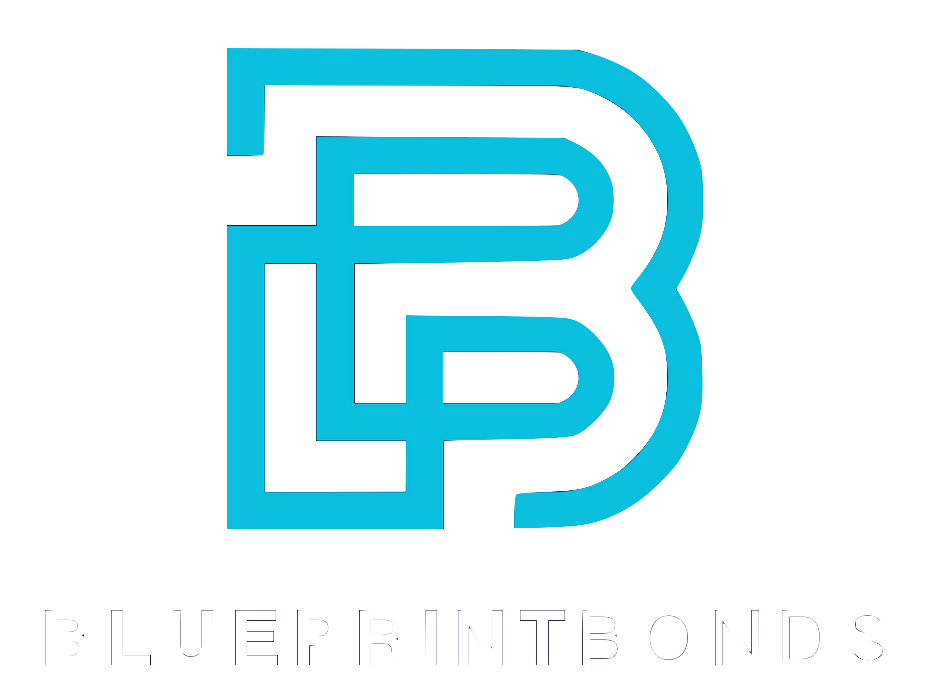In the construction and contracting industry, performance and payment bonds play a crucial role in ensuring that projects are completed as agreed upon. In Indiana, understanding the intricacies of these bonds is essential for contractors, subcontractors, and project owners alike. This article will delve into the details of performance and payment bonds in Indiana, outlining their importance, requirements, and processes.
What is a Performance Bond?
A performance bond is a type of surety bond that guarantees a contractor will fulfill their contractual obligations. If the contractor fails to complete the project according to the terms specified in the contract, the bond provides financial compensation to the project owner. This financial safety net is crucial in maintaining trust and accountability in the construction industry, where large sums of money and significant resources are often at stake.
Purpose of Performance Bonds
The primary purpose of a performance bond is to protect the project owner from financial loss due to contractor default. It ensures that the project will be completed on time and according to the specified quality standards. This bond is especially critical in public construction projects, where taxpayer money is at stake. Moreover, performance bonds can also serve as a motivational tool for contractors, encouraging them to adhere to timelines and quality benchmarks, knowing that their financial reputation is on the line. The presence of a performance bond can also enhance a contractor's credibility, making it easier for them to secure future projects.
Who Needs a Performance Bond?
In Indiana, performance bonds are typically required for contractors working on public projects. Government agencies often mandate these bonds to ensure that contractors are financially capable of completing the work. However, private project owners may also request performance bonds to mitigate risks associated with contractor performance. This is particularly common in large-scale developments or projects involving significant investments, where the potential for financial loss is considerable. Additionally, lenders and investors may require performance bonds as part of their due diligence process, providing an extra layer of security before committing funds to a project.
Understanding the nuances of performance bonds is essential for both contractors and project owners. Contractors must be aware of the bond requirements and the implications of failing to meet their obligations, as this can lead to not only financial repercussions but also damage to their professional reputation. On the flip side, project owners should conduct thorough research on the bonding capacity and history of potential contractors, ensuring they choose partners who are not only capable but also reliable. This collaborative approach can lead to smoother project execution and foster long-term relationships in the construction industry.

What is a Payment Bond?
A payment bond is another type of surety bond that guarantees that a contractor will pay their subcontractors, laborers, and suppliers involved in a project. This bond protects those who provide services and materials, ensuring they receive payment even if the contractor defaults. The bond serves as a financial assurance mechanism that can be critical for the smooth operation of construction projects, as it mitigates the risk of non-payment which can lead to delays and disputes.
Importance of Payment Bonds
Payment bonds are vital in the construction industry as they help maintain a healthy cash flow for subcontractors and suppliers. By ensuring that these parties are paid, payment bonds promote trust and collaboration among all stakeholders involved in a project. This is particularly important in larger projects where multiple subcontractors are engaged. Furthermore, the presence of a payment bond can enhance the contractor's credibility, as it demonstrates a commitment to fulfilling financial obligations. It also encourages subcontractors to bid on projects, knowing that their financial interests are safeguarded, which can lead to more competitive pricing and better project outcomes.
Who Benefits from Payment Bonds?
Subcontractors, laborers, and suppliers are the primary beneficiaries of payment bonds. If a contractor fails to pay them, the bond can be claimed to cover unpaid amounts. This protection encourages more subcontractors to participate in projects, knowing they have a safety net in place. Additionally, project owners and general contractors also benefit indirectly from payment bonds. By ensuring that all parties involved are compensated, it reduces the likelihood of liens being placed on the property, which can complicate ownership and financing. Moreover, the assurance that subcontractors will be paid can lead to improved performance and quality of work, as subcontractors are more likely to commit their best resources to a project when they feel secure in their financial arrangements.
Legal Requirements for Performance and Payment Bonds in Indiana
In Indiana, the legal framework governing performance and payment bonds is outlined in the Indiana Code. Understanding these requirements is essential for contractors and project owners to ensure compliance and protect their interests.
Indiana Code Overview
The Indiana Code specifies that performance and payment bonds are required for public construction projects exceeding a certain dollar threshold. This threshold is typically set at $150,000, but it can vary depending on the specific project and agency involved. Contractors must provide bonds that equal the total contract amount to meet these requirements. This regulation aims to safeguard the interests of the state and taxpayers by ensuring that contractors fulfill their obligations, thereby minimizing the risk of project delays and financial losses.
Additionally, the Indiana Code outlines the process for bond claims, which allows project owners to seek compensation if a contractor fails to perform as agreed. This legal protection is crucial, as it provides a mechanism for recourse in the event of contractor default, ensuring that subcontractors and suppliers are also compensated for their contributions to the project. Understanding these provisions can help contractors navigate potential disputes and foster a more collaborative working environment.
Bonding Capacity
Contractors must also consider their bonding capacity, which is the maximum amount of surety bonds they can obtain. This capacity is determined by the contractor's financial stability, experience, and track record. Contractors should work closely with surety companies to assess their bonding capacity and secure the necessary bonds for upcoming projects. A strong bonding capacity not only facilitates access to larger projects but also enhances a contractor's credibility in the eyes of project owners and stakeholders.
Moreover, maintaining a good relationship with surety companies can lead to more favorable terms and conditions for bonds. Contractors who demonstrate a history of successful project completion and financial responsibility may find themselves in a better position to negotiate lower premiums and more flexible bonding requirements. This proactive approach not only aids in securing bonds but also contributes to the overall success and reputation of the contractor within the competitive construction industry in Indiana.
How to Obtain a Performance and Payment Bond in Indiana
Obtaining a performance and payment bond involves several steps. Contractors must navigate the bonding process carefully to ensure they meet all requirements and secure the necessary coverage.
Step 1: Choose a Reputable Surety Company
Finding a reliable surety company is the first step in obtaining a performance and payment bond. Contractors should research various surety providers, comparing their rates, terms, and customer reviews. A reputable surety company will have a solid understanding of the Indiana bonding requirements and will guide contractors through the process. Additionally, it's beneficial to seek recommendations from industry peers or trade associations, as these sources can provide insights into which surety companies have a strong track record of supporting contractors in similar projects.
Step 2: Complete the Application Process
Once a surety company has been selected, contractors must complete a bond application. This application typically requires detailed information about the contractor's business, financial history, and project details. The surety company will assess this information to determine the contractor's eligibility for bonding. It is crucial to be thorough and transparent in this application, as any discrepancies or incomplete information could lead to delays or denials. Contractors may also want to prepare a cover letter that summarizes their experience and the specifics of the project, which can help the surety company understand the context of the application better.
Step 3: Provide Financial Documentation
Contractors will need to provide financial documentation, including tax returns, balance sheets, and profit and loss statements. This information helps the surety company evaluate the contractor's financial stability and bonding capacity. It is essential to present accurate and up-to-date financial records to increase the chances of securing the bond. In addition to standard financial documents, contractors may also consider including a personal financial statement, especially if they are a small business or a sole proprietor. This additional information can provide a more comprehensive view of the contractor's financial health and may strengthen their case for obtaining the bond.

Costs Associated with Performance and Payment Bonds
The costs of performance and payment bonds can vary significantly based on several factors, including the contractor's creditworthiness, the size of the project, and the bond amount. Understanding these costs is crucial for contractors when budgeting for a project. In many cases, these bonds are not just a regulatory requirement but also serve as a safeguard for project owners, ensuring that contractors will fulfill their obligations. This dual purpose adds an additional layer of complexity to the cost structure, making it essential for contractors to fully grasp the financial implications before committing to a bond.
Bond Premiums
Bond premiums are the fees charged by the surety company for issuing the bond. Typically, these premiums range from 0.5% to 3% of the total bond amount. Contractors with strong financial backgrounds and good credit ratings may qualify for lower premiums, while those with less favorable financial histories may face higher rates. The underwriting process can also influence premiums; for instance, a contractor's experience in similar projects and their overall reputation in the industry can lead to more favorable terms. Additionally, some surety companies may offer discounts for contractors who have a history of successful project completions, further incentivizing quality work and reliability.
Additional Fees
In addition to bond premiums, contractors may encounter other fees during the bonding process. These can include administrative fees, underwriting fees, and costs associated with obtaining financial documentation. It is essential to factor in these additional costs when planning for a project. Furthermore, contractors should be aware that certain projects may require multiple bonds, such as both performance and payment bonds, which can compound the overall costs. It is advisable for contractors to engage in thorough discussions with their surety agents to understand all potential fees and to explore options for bundling services that may reduce overall expenses. This proactive approach can lead to better financial management and a clearer understanding of the total investment required for securing bonds, ultimately contributing to smoother project execution.
Claims Process for Performance and Payment Bonds
Understanding the claims process for performance and payment bonds is essential for all parties involved in a construction project. Knowing how to file a claim and what documentation is required can save time and reduce stress in the event of a dispute.
Filing a Claim
If a contractor defaults on their obligations, the project owner can file a claim against the performance bond. This claim must be submitted in writing and should include details about the contractor's failure to perform. The surety company will then investigate the claim and determine its validity.
Payment Bond Claims
Subcontractors and suppliers can also file claims against payment bonds if they are not paid for their services. To file a claim, they must provide documentation proving their entitlement to payment, such as invoices and contracts. The surety company will review these claims and make payments as warranted.
Dispute Resolution
In some cases, disputes may arise during the claims process. If a claim is denied or the parties cannot reach an agreement, mediation or arbitration may be necessary. It is advisable for all parties to seek legal counsel to navigate these disputes effectively.
Common Misconceptions About Performance and Payment Bonds
Despite their importance, there are several misconceptions surrounding performance and payment bonds that can lead to confusion among contractors and project owners. Addressing these misconceptions can help clarify the role of these bonds in the construction industry.
Misconception 1: Performance Bonds Guarantee Project Completion
One common misconception is that performance bonds guarantee project completion. While these bonds provide financial protection in the event of contractor default, they do not ensure that the project will be completed on time or to the required standards. The bond serves as a safety net, but it is still the contractor's responsibility to fulfill their obligations.
Misconception 2: Payment Bonds Are Only for Subcontractors
Another misconception is that payment bonds only benefit subcontractors. While subcontractors are the primary beneficiaries, payment bonds also protect suppliers and laborers. Anyone providing services or materials for the project can benefit from the assurance that they will be paid, regardless of the contractor's financial situation.
Best Practices for Contractors in Indiana
For contractors in Indiana, adhering to best practices can enhance their chances of securing performance and payment bonds while minimizing risks associated with construction projects.
Maintain Strong Financial Records
Keeping accurate and up-to-date financial records is essential for contractors seeking bonds. Strong financial documentation not only facilitates the bonding process but also strengthens the contractor's reputation. Surety companies are more likely to issue bonds to contractors with transparent financial practices.
Build Relationships with Surety Companies
Establishing strong relationships with surety companies can be beneficial for contractors. A good rapport can lead to better rates, more favorable terms, and quicker access to bonds. Contractors should communicate openly with their surety providers and keep them informed about upcoming projects and financial changes.
Stay Informed About Industry Changes
The construction industry is constantly evolving, and staying informed about changes in regulations, bonding requirements, and best practices is crucial. Contractors should participate in industry associations, attend workshops, and engage with peers to remain current on trends and developments.
Conclusion
Performance and payment bonds are essential components of the construction industry in Indiana. Understanding their purpose, legal requirements, and the bonding process can help contractors protect their interests and ensure successful project completion. By adhering to best practices and maintaining strong financial records, contractors can navigate the bonding landscape effectively, fostering trust and collaboration among all stakeholders involved in construction projects.
Whether you are a contractor, subcontractor, or project owner, being knowledgeable about performance and payment bonds is crucial for success in the construction industry. With the right information and preparation, all parties can work together to achieve their goals while minimizing risks associated with contractor performance and payment issues.
Article By: Ryan Spalding
Licensed Insurance Agent & Bond Specialist
Contact Us

